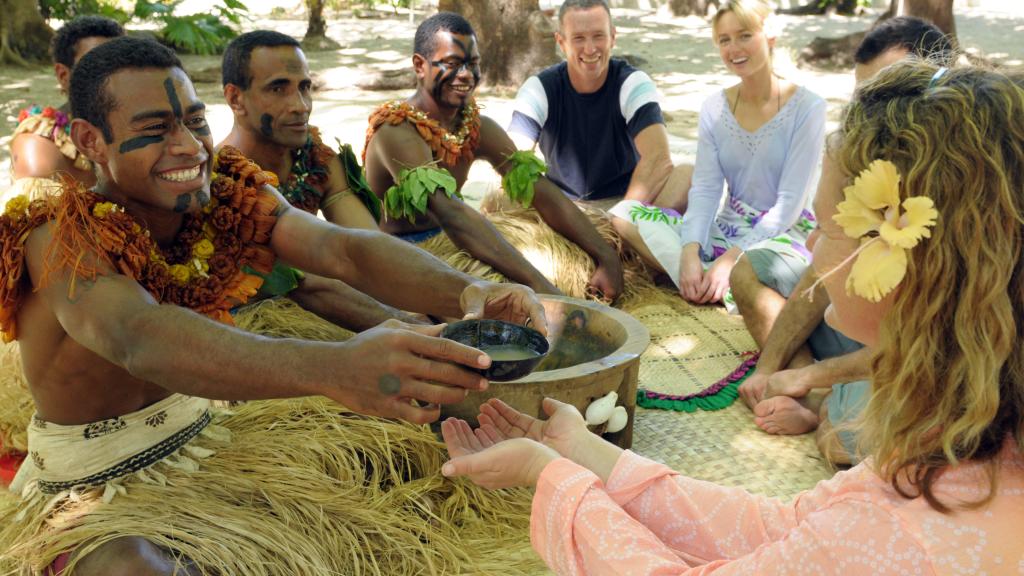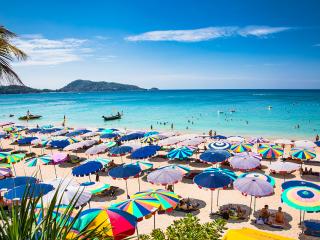10 Things You Didn't Know About Fiji

Planning your first Fiji escape and looking for a little insight into the stunning tropical archipelago? Here we’ve collated some of our favourite facts about paradisaical Fiji.
1. You Can Be In Two Days At Once
Stretching across two time zones, you can stand with one foot in ‘today’ and the other planted in ‘yesterday’ on the island of Taveuni where the international date line crosses.
2. Fijians Adore Children
Fiji is widely touted as one of the world’s most family friendly destinations. The beautiful, warm hearted people of Fiji have a deep respect for children; this is a culture where kids always come first. Families everywhere delight in leaving their children in the kind, fun and capable hands of Fijian Kids Clubs and Nanny services.
3. It’s Rude To Wear A Hat In A Fijian Village
According to Fijian custom, only the village chief may wear a hat. When visiting local villages, take note that it considered insulting to wear shoes into someones house or to touch their head (including children).
4. Fijians Used To Eat People
Long ago, cannibalism was significant to Fijian culture. The last reported case of cannibalism occurred in 1867 when a foreign missionary removed a comb from a Fijian chiefs head. Touching the head of a chief (or any Fijian for that matter) is considered highly disrespectful. Today, you can visit the Suva Museum where war clubs, cannibal forks and the Reverends boots are on display.
5. Rugby Is A National Religion
Rugby is a big deal in Fiji. Many locals play professional Rugby Union and Rugby League and if the Fiji Sevens (one of the world’s top teams) are playing an international game, time comes to a halt. Locals crowd into shops and homes to watch the events, while businesses shut down when the game is in play.
6. Winter Does Not Exist
It’s hard to point to ‘the best time’ to visit Fiji, when you won’t see an evening drop beneath a mild 18 degrees. All year, temperatures sit comfortably in the high 20s and early 30s, making for beautiful waters and sun dappled beaches every day.
7. Fijians Wear Frangipanis To Indicate Their Relationship Status
To indicate their relationship status, Fijian men and women will wear a frangipani behind their ear. Tucked on the right side tells the world they're married, on the left and they are single.
8. There Are Three Official Languages in Fiji
Thanks to the country's rich and colourful history, Fiji boasts three official languages. English, Fijian (in various regional dialects) and Fiji Hindi are widely spoken across the islands. Interestingly, over 40% of the population are ancestors of the Indians brought in by the British to work the sugarcane fields in colonial times.
9. It’s Easy To Discover The ‘Real’ Fiji
While Fiji is widely recognised for world-renowned resorts, stunning tourist attractions and sun-kissed, gin-clear waters, the ‘real’ Fiji is only ever minutes away. Lift the curtain and discover a deeply rich culture in local villages and establishments. Find adventure in verdant jungles, towering waterfalls and extraordinary reef sites.
10. Only 10% of Fiji is Land
Curiously only 10% of Fiji (322 islands) is actually made up of land, predominantly Viti Levu and Vanua Levu, while the remaining territory is water.
Posts by Category
Popular Posts

5 Simple Steps To Beat Jet Lag

Peak Season, School Holidays or the Off-Season When is the Best Time to Travel?

